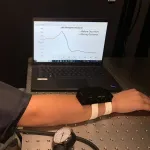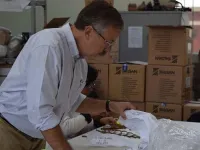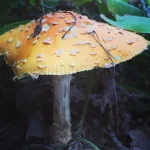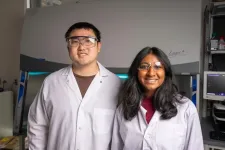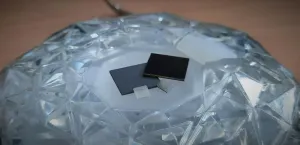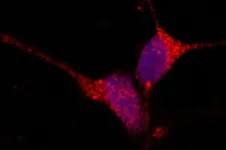(Press-News.org) In a new study in mice, a team of researchers from UCLA, the Swiss Federal Institute of Technology, and Harvard University have uncovered a crucial component for restoring functional activity after spinal cord injury. The neuroscientists have shown that re-growing specific neurons back to their natural target regions led to recovery, while random regrowth was not effective.
In a 2018 study published in Nature, the team identified a treatment approach that triggers axons — the tiny fibers that link nerve cells and enable them to communicate — to regrow after spinal cord injury in rodents. But even as that approach successfully led to the regeneration of axons across severe spinal cord lesions, achieving functional recovery remained a significant challenge.
For the new study, published this week in Science, the team aimed to determine whether directing the regeneration of axons from specific neuronal subpopulations to their natural target regions could lead to meaningful functional restoration after spinal cord injury in mice. They first used advanced genetic analysis to identify nerve cell groups that enable walking improvement after a partial spinal cord injury.
The researchers then found that merely regenerating axons from these nerve cells across the spinal cord lesion without specific guidance had no impact on functional recovery. However, when the strategy was refined to include using chemical signals to attract and guide the regeneration of these axons to their natural target region in the lumbar spinal cord, significant improvements in walking ability were observed in a mouse model of complete spinal cord injury.
"Our study provides crucial insights into the intricacies of axon regeneration and requirements for functional recovery after spinal cord injuries,” said Michael Sofroniew, MD, PhD, professor of neurobiology at the David Geffen School of Medicine at UCLA and a senior author of the new study. “It highlights the necessity of not only regenerating axons across lesions but also of actively guiding them to reach their natural target regions to achieve meaningful neurological restoration."
The authors say understanding that re-establishing the projections of specific neuronal subpopulations to their natural target regions holds significant promise for the development of therapies aimed at restoring neurological functions in larger animals and humans. However, the researchers also acknowledge the complexity of promoting regeneration over longer distances in non-rodents, necessitating strategies with intricate spatial and temporal features. Still, they conclude that applying the principles laid out in their work “will unlock the framework to achieve meaningful repair of the injured spinal cord and may expedite repair after other forms of central nervous system injury and disease.”
Article: Recovery of walking after paralysis by regenerating characterized neurons to their natural target region, Jordan W. Squair, Marco Milano, Alexandra de Coucy, Matthieu Gautier, Michael A. Skinnider, Nicholas D. James, Newton Cho, Anna Lasne, Claudia Kathe, Thomas H. Hutson Steven Ceto, Laetitia Baud, Katia Galan, Viviana Aureli, Achilleas Laskaratos, Quentin Barraud Timothy J. Deming, Richie E. Kohman, Bernard L. Schneider, Zhigang He, Jocelyne Bloch, Michael V. Sofroniew, Gregoire Courtine, Mark A. Anderson. Science 2023 DOI: 10.1126/science.adi6412
The research team included scientists from NeuroX Institute, School of Life Sciences, Swiss Federal Institute of Technology (EPFL); the Department of Neurosurgery, Lausanne University Hospital (CHUV) and University of Lausanne (UNIL), Center for Interventional Neurotherapies (NeuroRestore); Wyss Center for Bio and Neuroengineering; Department of Clinical Neuroscience, Lausanne University Hospital (CHUV) and University of Lausanne; Departments of Bioengineering, Chemistry and Biochemistry, University of California, Los Angeles; Bertarelli Platform for Gene Therapy, Swiss Federal Institute of Technology; Brain Mind Institute, School of Life Sciences, Swiss Federal Institute of Technology; M. Kirby Neurobiology Center, Department of Neurology, Boston Children's Hospital, Harvard Medical School, Boston; Department of Neurobiology, David Geffen School of Medicine, University of California, Los Angeles.
This work was supported by the Defitech Foundation, Wings for Life, Riders4Riders, Wyss Center for Bio and Neuroengineering, Swiss National Science Foundation (PZ00P3_185728 to M.A.A. and PZ00P3_208988 to J.W.S.); the Morton Cure Paralysis Foundation (to M.A.A); the ALARME Foundation (to M.A.A. and G.C); the Dr. Miriam and Sheldon G. Adelson Medical Foundation (to M.V.S., Z.H., and T.J.D.); Wings for Life (M.A.A., M.V.S., M.A.S., and M.M); Holcim-Stiftung Foundation (to J.W.S.); and the Canadian Institutes for Health Research (to J.W.S.). We are grateful to J. Ravier and M. Burri for the illustrations and to L. Batti and I. Gantar from the Advanced Lightsheet Imaging Center (ALICe) at the Wyss Center for Bio and Neuroengineering, Geneva. Funding: This work was supported in part using the resources and services of the Gene Expression Core Facility, and the Bertarelli Platform for Gene Therapy at the School of Life Sciences of EPFL.
END
Scientists regenerate neurons that restore walking in mice after paralysis from spinal cord injury
Guiding cells to natural target region key to functional recovery
2023-09-21
ELSE PRESS RELEASES FROM THIS DATE:
Conversations with plants: Can we provide plants with advance warning of impending dangers?
2023-09-21
Imagine if humans could ‘talk’ to plants and warn them of approaching pest attacks or extreme weather.
A team of plant scientists at the Sainsbury Laboratory Cambridge University (SLCU) would like to turn this science fiction into reality using light-based messaging to ‘talk’ to plants.
Early lab experiments with tobacco (Nicotiana benthamiana) have demonstrated that they can activate the plant's natural defence mechanism (immune response) using light as a stimulus (messenger).
Light serves as a universal means of daily human communication, for example the signalling at traffic lights, pedestrian ...
Chicago’s West Side is air pollution hotspot
2023-09-21
Three independent state-of-the-art datasets reveal that the West Side has more nitrogen dioxide (NO2) pollution than the rest of the city
Depending on the month, residents in this area experience 16 to 32% higher NO2 concentrations on average
By identifying hotspots, residents and policymakers can be confident about where to prioritize immediate interventions
EVANSTON, Ill. — The western edge of Chicago — including the North and South Lawndale, East Garfield Park, Archer Heights and Brighton Park neighborhoods — experiences up to 32% higher concentrations of nitrogen dioxide (NO2) air pollution compared to the rest of the city, ...
Biophysical Society announces 2024 Society Fellows
2023-09-21
ROCKVILLE, MD – The Biophysical Society is proud to announce its 2024 Society Fellows. This award honors the Society’s distinguished members who have demonstrated excellence in science and contributed to the expansion of the field of biophysics. The Fellows will be honored at the Biophysical Society’s 68th Annual Meeting, being held in Philadelphia, Pennsylvania from February 10-14, 2024. The 2024 Fellows are:
Rommie E. Amaro, University of California, San Diego, USA, is named a Biophysical Society Fellow for her work on developing methods to enable the simulation of biological molecules in situ and ...
Wearable optical device shows promise for detecting postpartum hemorrhage
2023-09-21
WASHINGTON — Researchers have developed a wearable optical device for early detection of hemorrhage during labor or after childbirth. This serious heavy bleeding can be hard to detect before it becomes an emergency and accounts for almost 30% of maternal deaths globally and just over 10% of maternal deaths in the United States.
Studies have shown that early diagnosis and treatment for postpartum hemorrhage is the best way to prevent deaths. The new device is designed to be worn on the wrist, where it uses laser speckle imaging to continuously ...
David Huang, M.D., Ph.D., receives Lasker Award for transformative imaging technology
2023-09-21
PORTLAND, Oregon -- The United States’ most distinguished biomedical research award is being given to Oregon Health & Science University physician-scientist David Huang, M.D., Ph.D., for co-inventing an imaging technology that routinely helps prevent blindness and is increasingly used to diagnose and treat conditions of the heart, brain, skin and more.
Huang is receiving the 2023 Lasker-DeBakey Clinical Medical Research Award as a co-inventor of optical coherence tomography, or OCT, the Albert and ...
New study reveals a long history of violence in ancient hunter-gatherer societies
2023-09-21
Violence was a consistent part of life among ancient communities of hunter-gatherers, according to a new study co-authored by a Tulane University researcher that looked for signs of trauma on 10,000-year-old skeletal remains from burial sites in northern Chile.
The study was published in the journal PLOS ONE.
Archaeological research has shown that interpersonal violence and warfare played an important role in the lives of hunter-gatherer groups over time. Still, many questions remain about the factors that influence such violence. The record of human populations in northern Chile extends across 10,000 years, providing a valuable opportunity to study patterns in violence over time.
John ...
How climate warming could disrupt a deep-rooted relationship
2023-09-21
Children are taught to leave wild mushrooms alone because of their potential to be poisonous. But trees on the other hand depend on fungi for their well-being. Look no further than ectomycorrhizal fungi, which are organisms that colonize the roots of many tree species where the boreal ecosystem (zone encompassing Earth’s northernmost forests) and the temperate ecosystem (zone between the tropical and boreal regions) meet. This area features a mix of boreal trees including needle-leaved evergreens and temperate tree species including maple and oak.
Just like a healthy human relationship, trees and fungi work well together because they help one another. When the ectomycorrhizal ...
Split gene-editing tool offers greater precision
2023-09-21
HOUSTON – (Sept. 21, 2023) – To make a gene-editing tool more precise and easier to control, Rice University engineers split it into two pieces that only come back together when a third small molecule is added.
Researchers in the lab of chemical and biomolecular engineer Xue Sherry Gao created a CRISPR-based gene editor designed to target adenine ⎯ one of the four main DNA building blocks ⎯ that remains inactive when disassembled but kicks into gear once the binding molecule is added.
Compared to the intact original, the split editor is more precise and stays active for a narrower window of time, ...
Diamond materials as solar-powered electrodes - spectroscopy shows what's important
2023-09-21
It sounds like magic: photoelectrodes could convert the greenhouse gas CO2 back into methanol or N2 molecules into valuable fertiliser - using only the energy of sunlight. An HZB study has now shown that diamond materials are in principle suitable for such photoelectrodes. By combining X-ray spectroscopic techniques at BESSY II with other measurement methods, Tristan Petit's team has succeeded for the first time in precisely tracking which processes are excited by light as well as the crucial role of the surface of the diamond materials.
At first glance, lab-grown diamond materials ...
How do toxic proteins accumulate in Alzheimer’s and other diseases?
2023-09-21
Under normal circumstances, tau protein is part of the brain’s infrastructure, important for stabilizing neurons into their proper shapes. But sometimes tau gets knotted up into tangles and turns toxic, injuring brain tissue and causing tauopathies, a group of brain diseases characterized by problems with learning, memory and movement. Alzheimer’s disease is the most common tauopathy, but the group also includes Parkinson’s disease, chronic traumatic encephalopathy (CTE) and several rare genetic conditions.
In search of ways to prevent these destructive ...
LAST 30 PRESS RELEASES:
First Editorial of 2026: Resisting AI slop
Joint ground- and space-based observations reveal Saturn-mass rogue planet
Inheritable genetic variant offers protection against blood cancer risk and progression
Pigs settled Pacific islands alongside early human voyagers
A Coral reef’s daily pulse reshapes microbes in surrounding waters
EAST Tokamak experiments exceed plasma density limit, offering new approach to fusion ignition
Groundbreaking discovery reveals Africa’s oldest cremation pyre and complex ritual practices
First breathing ‘lung-on-chip’ developed using genetically identical cells
How people moved pigs across the Pacific
Interaction of climate change and human activity and its impact on plant diversity in Qinghai-Tibet plateau
From addressing uncertainty to national strategy: an interpretation of Professor Lim Siong Guan’s views
Clinical trials on AI language model use in digestive healthcare
Scientists improve robotic visual–inertial trajectory localization accuracy using cross-modal interaction and selection techniques
Correlation between cancer cachexia and immune-related adverse events in HCC
Human adipose tissue: a new source for functional organoids
Metro lines double as freight highways during off-peak hours, Beijing study shows
Biomedical functions and applications of nanomaterials in tumor diagnosis and treatment: perspectives from ophthalmic oncology
3D imaging unveils how passivation improves perovskite solar cell performance
Enriching framework Al sites in 8-membered rings of Cu-SSZ-39 zeolite to enhance low-temperature ammonia selective catalytic reduction performance
AI-powered RNA drug development: a new frontier in therapeutics
Decoupling the HOR enhancement on PtRu: Dynamically matching interfacial water to reaction coordinates
Sulfur isn’t poisonous when it synergistically acts with phosphine in olefins hydroformylation
URI researchers uncover molecular mechanisms behind speciation in corals
Chitin based carbon aerogel offers a cleaner way to store thermal energy
Tracing hidden sources of nitrate pollution in rapidly changing rural urban landscapes
Viruses on plastic pollution may quietly accelerate the spread of antibiotic resistance
Three UH Rainbow Babies & Children’s faculty elected to prestigious American Pediatric Society
Tunnel resilience models unveiled to aid post-earthquake recovery
Satellite communication systems: the future of 5G/6G connectivity
Space computing power networks: a new frontier for satellite technologies
[Press-News.org] Scientists regenerate neurons that restore walking in mice after paralysis from spinal cord injuryGuiding cells to natural target region key to functional recovery
